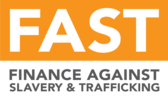The Implementation Toolkit aims to help financial sector institutions implement the Blueprint. Implementing the Blueprint will in time lead to a stronger connection between an enterprise’s behaviour and its costs of capital. That connection will naturally move global markets away from their current tolerance for 40.3 million people in modern slavery and human trafficking, and encourage capital allocation to enterprises that helps reduce modern slavery and human trafficking risks. It will help address the ongoing tragic market failure and denial of human rights that this represents, and accelerate progress towards the Sustainable Development Goals, especially Target 8.7.

